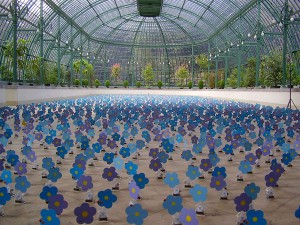Introduction
Solar energy has been promoted as an alternative to the less clean energy associated with fossil fuels. Specifically, countries looking to reform their energy efforts to be more eco-friendly are looking to solar energy. This blog post will describe the purpose of these efforts, and describe initiatives in both China and Europe that have been put in place to expand solar energy’s use in these countries.
Purpose of Solar Energy Efforts
Countries that have relied on fossil fuels historically are now running into problems with the sustainability of their energy systems. Solar energy efforts have been implemented by different countries to address this. Solar energy is a great alternative for many reasons. Solar energy is renewable, green, eco-friendly, low voltage, and available anywhere. These characteristics make it attractive to countries that may have a lack of resources, or be struggling with pollution from other energy sources. This blog post will describe a few solar energy efforts done by countries to leverage the advantages of solar energy.
Efforts in China
China is a large country with a large pollution problem, as it is the world’s biggest carbon emitter. In response, China’s National Development and Reform Commission made a goal of tripling China’s solar panel installed capacity to 70 gigawatts by 2017. As part of this plan, China will also increase its reliance on wind and hydro power. This is part of China’s larger goal, which is to increase the energy it consumes from non-fossil fuels to 13% of its total consumed energy.
Solar power efforts in China are mainly part of a bigger picture in energy reform. China has had to declare war on smog, so solar power offers one of many alternatives to burning fossil fuels. China has set goals to increase nuclear power use as well, and expects it will meet its new solar target by 2017.
Efforts in Europe
In Europe, many different solar efforts are being implemented by various governments, and some private-public partnerships have developed. Here, I will describe two specific solar efforts, one that has been used in several European countries, and one that is more specific to France.
Solar Flowers
Solar Solidarity International is a group that developed “solar flowers”, and a program to put them throughout Europe and test their usefulness. These solar flowers double as art designed by Alexandre Dang and mini dancing solar energy collectors.

These solar flowers dance when collecting sun. Their purpose was not only to raise awareness throughout Europe about solar energy, but also, to raise funding to support solar electrification projects in the developing world. This group has done over 40 exhibitions throughout Europe, and sold over 10,000 flowers. The main exhibitions were in Belgium, which were at the European Commission, the European Parliament, and at the Council of the EU. There were also exhibitions in Barcelona, Valencia, and Tenerife in Spain; in Milan, Italy; in Essen, Germany; and in Chambray, France. Proceeds collected from funding went to solar electrification of schools in Burkina Faso, Senegal, Haiti and Nepal.
Roof Tiles
France has emphasized using solar panels specifically called Building Integrated Photovoltaics (BIPV), which can integrate easily into a building. The example that has been emphasized in France are solar shingles. Unlike typical solar panels, solar shingles are specifically designed not only to collect solar energy, but to protect the roof, and are extremely durable for this purpose and can withstand the weather. They are also smaller, more lightweight, and easier to install, and that makes them more accessible to the average person.

Although France has emphasized using these solar panels, growth in their interest has slowed. According to the European Photovoltaics Industry Association, there has been a lack of political support for this due to attacks from the nuclear and fossil fuel industries.
The video below shows a case study of installing BIPVs.
Conclusion
In conclusion, countries now have a lot of attractive and creative alternatives to turn to when selecting solar energy products. Hopefully, governments in these countries will continue to promote energy reform programs that encourage the use of solar power.
Very interesting post, the pictures help to understand what the post is all about and very informative. The flowers are super curious definitely will look them up